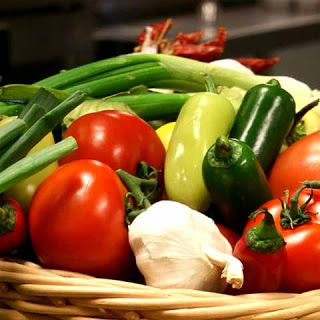 For most of us producing all of our own food is just a fantasy. It evokes visions of multiple acres of fertile land, long work days, and expensive machinery. However, none of these are necessary to achieve self-sufficient food production.
For most of us producing all of our own food is just a fantasy. It evokes visions of multiple acres of fertile land, long work days, and expensive machinery. However, none of these are necessary to achieve self-sufficient food production.
There are many gardening techniques that can produce an abundance of food for you and your family without requiring a lot of space, money or equipment. What each of these methods will require is your time, but not the dawn-to-dusk work hours associated with farming.
Rather, you will need time to study and practice these methods and other food preparation skills such as learning to mill your own wheat or corn flour to make breads, tortillas, pastas from scratch, or learning to can, pickle, or preserve food in all its forms.
Your diet should also be considered when planning for the best self-sufficient food production method. Do you need meat and dairy products? How much grains do you require? Yes, in order fully produce all of your food off-the-grid, you may have to make changes to your current diet if your resources are limited. Some may view these as dietary sacrifices, yet the folks that can claim a high level of food self-reliance will all claim their diet is far healthier than the average American.
With dedication and proper planning, everyone has the ability to survive the looming food crisis by producing their own food. None of the following methods should necessarily be considered by itself. Each offers unique techniques that can be mixed and matched for the best results. Their optimal application depends on calculations of your property size, climate zone, or your budget and time constraints.
Here are the 4 best food production methods for self-reliance:
1. Permaculture Gardening
Permaculture is where you design an entire edible habitat based on the natural capital of your setting. Then, place plants to methodically balance the soil, water, and pests. For instance, a nitrogen fixing plant may be planted next to a nitrogen hungry plant, which may sit next to an ornamental that deters predators, and so on. Permaculture gardening re-creates nature by using a large variety of plants while incorporating as many different animals as feasible like chickens, goats, ducks, and bees. Keeping your garden neat and tidy can be done with a string trimmer around the edges to knock down unwanted weeds. You may also see features like vertical gardening and aquaculture ponds in permaculture designs depending on the space available. Utilizing this method is not expensive, but requires a lot of know-how and trial and error. Permaculture gardening can produce massive abundance. See the amazing video below for a real-world example of going off-the-grid in suburbia:
2. Aquaponics
Aquaponics is a interdependent hybrid system of aquaculture and hydroponic gardening. Vegetables and herbs grow in soil-less containers that are fed with waste water from the aquaculture pools. The plants feast on the bacteria from fish waste and return the water to the fish in a purified state. These systems can be as big or as small as you wish and can potentially produce large amounts of fish and vegetables. When done properly, very little if any additional fertilizer or chemicals are needed, just fish food. Aquaponics can also be applied indoors, either in a greenhouse setting or with grow lights. The video below is a good description of the benefits of Aquaponics.
3. Greenhouses
If you live in a region of the world with harsh winters, then a greenhouse will be essential for food self-sufficiency. Obviously, a greenhouse alone is not a strategy for full food production unless it is a large facility. Typically it can be viewed as a compliment to other gardening methods. In fact, the Dervaes family in the first video above uses a greenhouse to clone and start seedlings even though they live in Southern California. There are great designs and greenhouse starter kits available online. Below is a brief video on the benefits of greenhouse gardening:
4. Indoor Grow Rooms
Indoor growing is typically done with grow lights and hydroponics. Some people have sun-rooms in their homes which can basically act as a fancier greenhouse. However, for this section we’ll focus on indoor hydroponics. This method of growing is certainly not the cheapest way to produce food, yet it is a steadfast method especially where weather and other elements can hinder food self-sufficiency. Indoor hydroponics requires grow lights such as LEDs, CFLs
, or HPSs
, along with tubing, drainage, fertilizer and ventilation. However, even a small space can produce fantastic yields for leafy vegetables, herbs, tomatoes, sprouts, and much more. To make this method fully off the grid find the most energy efficient grow lights possible and think about getting a solar generator to offset the electric costs. Below is a video about indoor plant lighting:
RELATED ARTICLES:
7 Reasons Food Shortages Will Become a Global Crisis
5 Simple Ways to Prepare for Food Inflation

Be the first to comment on "4 Best Methods for Off-the-Grid Food Production"